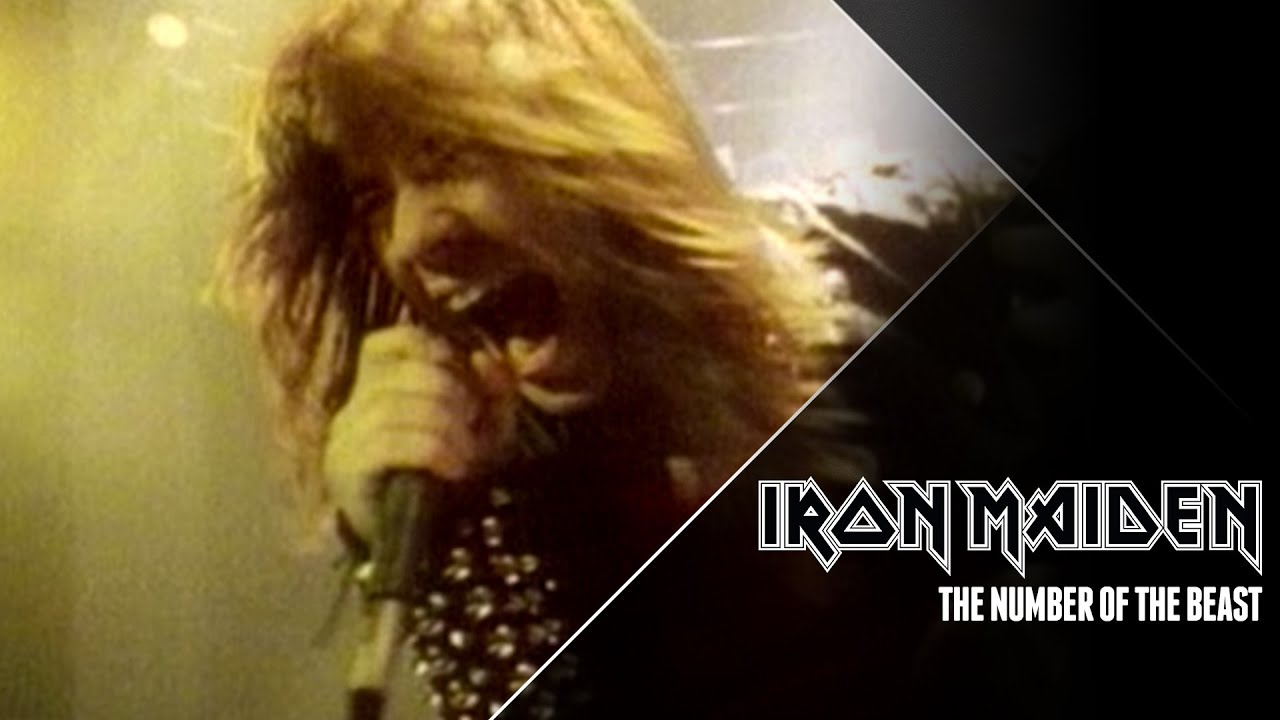Music
Is Iron Maiden Satanic? A Deep Dive into the Myth and Reality
Iron Maiden, one of the most iconic heavy metal bands in history, has often found itself at the center of heated debates regarding its purported connections to satanism and devil worship. With their elaborate album covers, theatrical performances, and lyrics that explore dark themes, many have questioned whether the band endorses such beliefs or simply uses them as artistic expression. As we delve deeper into this topic, we aim to unravel the complexities behind Iron Maiden’s imagery and lyrical content while addressing the question: Is Iron Maiden Satanic?
The Origins of Controversy

At the heart of the controversy surrounding Iron Maiden and satanism lies “The Number of the Beast,” a song inspired by a nightmare experienced by bassist Steve Harris after watching a horror film. This connection to nightmarish imagery has led listeners to conflate the band’s artistry with actual satanic beliefs, creating a narrative filled with misunderstanding and fear.
Understanding the Song’s Inspiration

“The Number of the Beast” serves as an archetype for the entire band’s exploration of dark themes, drawing from horror elements to create a compelling narrative.
Steve Harris had a vivid dream after he watched the classic 1976 horror film “Damien: Omen II.” The song reflects this nightmare, channeling the imagery through powerful guitar riffs and haunting vocals. The lyrics intertwine fiction with reality, propelling the listener into a world dominated by fear and the unknown.
This duality is integral to understanding the controversy. While the song includes references to satanism, its origin is rooted in fictional storytelling rather than an endorsement of such beliefs. It exemplifies how art can warp perceptions, leading audiences to wrestle with what is real and what is merely an artistic fabrication.
Bruce Dickinson’s Perspective
Bruce Dickinson, the band’s charismatic frontman, has openly commented on the allure of satanic imagery. He describes it as exciting and dramatic—an invitation to intrigue rather than a call to worship.
For Dickinson, these themes are not representations of personal belief but rather artistic devices that provoke thought and discussion. By framing satanic imagery as theatrical performance, he encourages listeners to view it through a lens of creativity rather than literal interpretation. This approach distances Iron Maiden from any associations with actual satanism, clarifying that their intent is far more complex than mere shock value.
Artistry vs. Ideology
The use of satanic imagery within Iron Maiden’s music raises significant questions about the nature of artistic expression in heavy metal. Many bands, particularly those in the genre, revel in the shock value these themes provide. They draw attention not only to their music but also prompt broader discussions around morality, belief, and societal norms.
Heavy metal often thrives on contrasting emotions—fear, power, rebellion—and Iron Maiden taps into this rich tapestry. By employing satanic imagery, they utilize it as a vehicle to explore deeper anxieties and societal critiques, akin to how classical literature employs darkness to convey complex human emotions.
Ultimately, this becomes a conversation about the role of artists in society and how they choose to express themselves. Are they responsible for how audiences interpret their work? Or does the onus lie with the listeners, who may be quick to take things literally?
Public Perception and Misunderstanding

Despite the nuanced artistic choices made by Iron Maiden, public perception tends to gravitate toward literal interpretations. Some groups have protested against the band, believing their music influences youth towards devil-worship. This reaction exposes a broader societal fear surrounding heavy metal culture and its deviation from conventional values.
The Scapegoat Phenomenon
The phenomenon of scapegoating cultural phenomena due to misunderstanding or fear is not new. Historically, various forms of entertainment have been demonized, and heavy metal is no exception.
In the late 20th century, many societal factions viewed heavy metal as an existential threat to traditional values. The loud guitars and rebellious lyrics became symbols of chaos, prompting community outrage over perceived moral decay. Iron Maiden, with its theatrical performances and dark themes, became an easy target for critics looking to blame a single entity for the larger issues facing society.
Critics often overlook that musical preferences are subjective and that individuals resonate differently with varying styles of music. Instead of recognizing Iron Maiden as a band articulating complex emotions, they are painted as purveyors of evil. This binary thinking simplifies the conversation, reducing the band’s multifaceted artistry into a singular narrative of danger.
Activist Responses
Various activist groups have voiced concerns over Iron Maiden’s influence, demonstrating a tendency to conflate artistic imagery with actual beliefs.
Protests and campaigns against the band often highlight a fear that young people may be drawn into satanic practices through exposure to their music. Such responses stem from broader anxieties regarding youth culture, technology, and the changing landscape of values in society.
While it’s essential to respect differing opinions, it’s equally important to recognize that Iron Maiden doesn’t position itself as a cult leader. Their music serves as a reflection of society’s shadows rather than a manual for devil-worship.
Cultural Context of Heavy Metal
When examining why Iron Maiden is perceived as satanic, one must consider the cultural context of the 1980s when the band first emerged. During this time, heavy metal was synonymous with rebellion against societal norms, making the exploration of taboo subjects, including satanism, a way to challenge the status quo.
Bands like Iron Maiden utilized dark themes to provoke thought and inspire dissent. The introspective nature of heavy metal allows for commentary on societal constructs, much like punk rockers used chaos and anarchy as resistance. This cultural backdrop illustrates that the band’s exploration of satanism is less about genuine belief and more about pushing boundaries to foster discussion.
The Role of Cultural Context

Delving into the cultural landscape of the 1980s reveals how heavy metal became a vehicle for rebellion and self-expression. Iron Maiden, along with their contemporaries, emerged as voices against established norms, making their exploration of darker themes both relevant and provocative.
The Rebellion Narrative
When examining heavy metal through the lens of rebellion, it’s vital to understand how the genre positioned itself against societal expectations.
During the 1980s, young people faced a rapidly changing world, marked by economic uncertainty, political strife, and shifting social dynamics. In many ways, heavy metal resonated with this discontent, offering an outlet for frustrations and fears. Iron Maiden’s music addressed these feelings head-on, allowing fans to confront their anxiety through cathartic expression.
By incorporating themes associated with satanism, Iron Maiden challenged societal norms. This defiance provided a sense of liberation, beckoning audiences to engage with their inner fears. This transformation from fear to engagement signifies how art can serve as a mirror reflecting societal angst.
The Evolution of Heavy Metal
Over the years, heavy metal has evolved, influencing and being influenced by various cultural shifts. From glam rock to thrash to death metal, each sub-genre brings its own unique flavors and themes to the table.
Iron Maiden stands out as an anomaly with their consistent blend of storytelling, artistry, and technical prowess. The band’s evolution reflects the fluid nature of art, where thematic explorations can shift in meaning over time, complicating the idea of a straightforward identity tied solely to satanism.
Their mascot, Eddie, symbolizes this evolution, embodying various personas throughout the band’s career. This versatility allows Iron Maiden to navigate different themes without being pigeonholed into a singular narrative. The way they play with imagery reinforces the notion that their creative process is dynamic and adaptive.
Themes of Fear and Power
The recurring motifs found in Iron Maiden’s discography often revolve around themes of fear and power. These themes resonate deeply within heavy metal culture, serving as a reaction to broader societal anxieties.
Fear, in this context, is not merely about the supernatural but encapsulates the human experience—our struggles, our triumphs, and our ultimate mortality. By harnessing dark themes, Iron Maiden invites listeners to grapple with their own fears, transforming discomfort into empowerment.
Power, too, plays a critical role in their music. The confrontation with dark forces enables listeners to question authority and societal structures. Through their lyrical narratives, Iron Maiden empowers its audience to reclaim control over their fears, rendering the act of listening a transformative experience.
The Band’s Own Stance

When asked about accusations of satanism, Steve Harris humorously dismisses the notion, stating that the band has evolved into an entity beyond just music. This statement encapsulates the essence of Iron Maiden as a brand, revealing layers of complexity woven into their identity.
The Evolution Beyond Music
Iron Maiden’s evolution into a cultural phenomenon transcends musical boundaries, developing a legacy that’s multi-dimensional. Over the years, they’ve become synonymous with heavy metal, garnering a dedicated fanbase while also attracting criticism.
Through this evolution, Eddie—their iconic mascot—has taken on various personas, further complicating the idea of a fixed identity. He embodies diverse roles, from a zombie to a soldier, highlighting the band’s commitment to evolving their narrative.
What’s fascinating about this evolution is how it mirrors societal change. Just as the world moves forward, so does Iron Maiden’s messaging, allowing them to remain relevant while exploring timeless themes of fear, power, and rebellion.
Artistic Exploration
Iron Maiden’s relationship with satanic themes can primarily be understood as an artistic exploration rather than a declaration of belief. Their imagery and lyrics serve as a canvas to evoke emotion, provoke thought, and engage audiences in meaningful conversations.
Much like a painter might employ dark colors to convey sorrow or anger, Iron Maiden uses satanic imagery to express the darker aspects of the human experience. In doing so, they invite listeners to embrace discomfort, challenging them to confront their own fears and insecurities.
This form of artistic exploration liberates the listener from a binary perspective, allowing for a spectrum of interpretations. The band’s refusal to be limited by conventional understandings encourages fans to engage with the music thoughtfully, forging deeper connections in the process.
The Importance of Interpretation
Understanding Iron Maiden’s artistry requires a willingness to engage with the nuances of their work. Rather than viewing their music through a simplistic lens of satanism or devil worship, audiences must appreciate the multitude of themes present in their discography.
This importance of interpretation underscores the need for critical engagement with art. It compels listeners to reflect on their own values and beliefs, leading to richer discussions surrounding morality, fear, and rebellion.
Engaging with Iron Maiden’s catalog encourages fans to think critically about what satanism represents—not as a literal practice but as a symbol of humanity’s struggle against darkness. This intricate framework elevates the band beyond mere entertainers, positioning them as thought leaders in the realm of heavy metal.
In conclusion, the question Is Iron Maiden Satanic? evokes much more than a simple yes or no answer. The band’s relationship with satanic themes is complex and multifaceted, serving primarily as a vehicle for artistic exploration rather than a declaration of belief. Their exploration of darkness acts as a means of confronting societal fears, challenging norms, and expressing the myriad complexities of the human experience.
Iron Maiden’s enduring legacy resides not in claims of worshipping the devil, but in their ability to engage listeners in profound dialogues about power, fear, and rebellion. The interplay between artistic expression and public perception continues to shape their narrative, inviting us all to look beyond the surface and delve into the depths of what their music truly represents.
